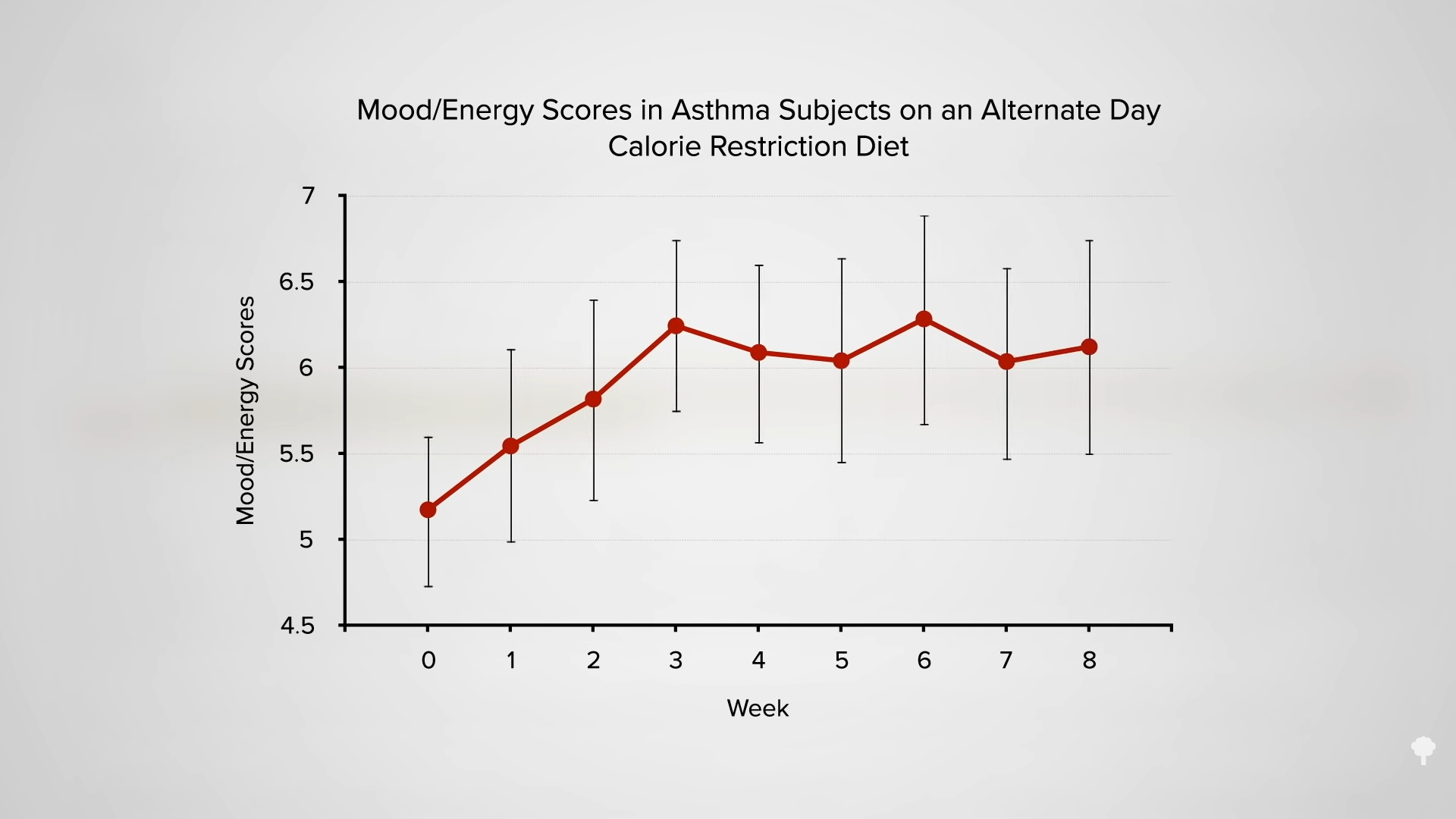Alternate-day modified fasting is put to the test for lifespan extension.
Is it true that alternate-day calorie restriction prolongs life? Doctors have anecdotally attributed improvements in a variety of disease states to alternate-day fasting, including asthma; seasonal allergies; autoimmune diseases, such as rheumatoid arthritis and osteoarthritis; infectious diseases, such as toenail fungus, periodontal disease, and viral upper respiratory tract infections; neurological conditions, such as Tourette’s syndrome and Meniere’s disease; atrial fibrillation; and menopause-related hot flashes. The actual effect on chronic disease, however, remains unclear, as I discuss in my video Does Intermittent Fasting Increase Human Life Expectancy?.
Alternate-day fasting has been put to the test for asthma in overweight adults, and researchers found that asthma-related symptoms and control significantly improved, as did the patients’ quality of life, including objective measurements of lung function and inflammation. As you can see in the graphs below and at 0:56 in my video, there were significant improvements in peak airflow, mood, and energy. Their weight also improved—about a 19-pound drop in eight weeks—so it’s hard to tease out the effects specific to the fasting beyond the benefits we might expect from weight loss by any means.


For the most remarkable study on alternate-day fasting, you have to go back more than a half-century. Though the 2017 cholesterol findings were the most concerning data I could find on alternate-day fasting, the most enticing was published in Spain in 1956. The title of the study translates as “The Hunger Diet on Alternate Days in the Nutrition of the Aged.” Inspired by the data being published on life extension with caloric restriction on lab rats, researchers split 120 residents of a nursing home in Madrid into two groups. Sixty residents continued to eat their regular diet, and the other half were put on an alternate-day modified fast. On the odd days of the month, they ate a regular 2,300-calorie diet; on the even days, they were given only a pound of fresh fruits and a liter of milk, estimated to add up to about 900 calories. This continued for three years. So, what happened?
As you can see below and at 2:16 in my video, throughout the study, 13 participants died in the control group, compared to only 6 in the intermittent fasting group, but those numbers were too small to be statistically significant.

What was highly significant, though, was the number of days spent hospitalized: Residents in the control group spent a total of 219 days in the infirmary, whereas the alternate-day fasting group only chalked up 123 days, as you can see below and at 2:38 in my video.

This is held up as solid evidence that alternate-day fasting may improve one’s healthspan and potentially even one’s lifespan, but a few caveats must be considered. It’s not clear how the residents were allocated to their respective groups. If, instead of being randomized, healthier individuals were inadvertently placed in the intermittent fasting group, that could skew the results in their favor. As well, it appears the director of the study was also in charge of medical decisions at the nursing home. In that role, he could have unconsciously been biased toward hospitalizing more folks in the control group. Given the progress that has been made in regulating human experimentation, it’s hard to imagine such a trial being run today, so we may never know if such impressive findings can be replicated.
Well, that was interesting! I had never even heard of that study until I started digging into the topic.
Check out my fasting series and popular videos on the subject here.
For more on longevity, see related videos below.







